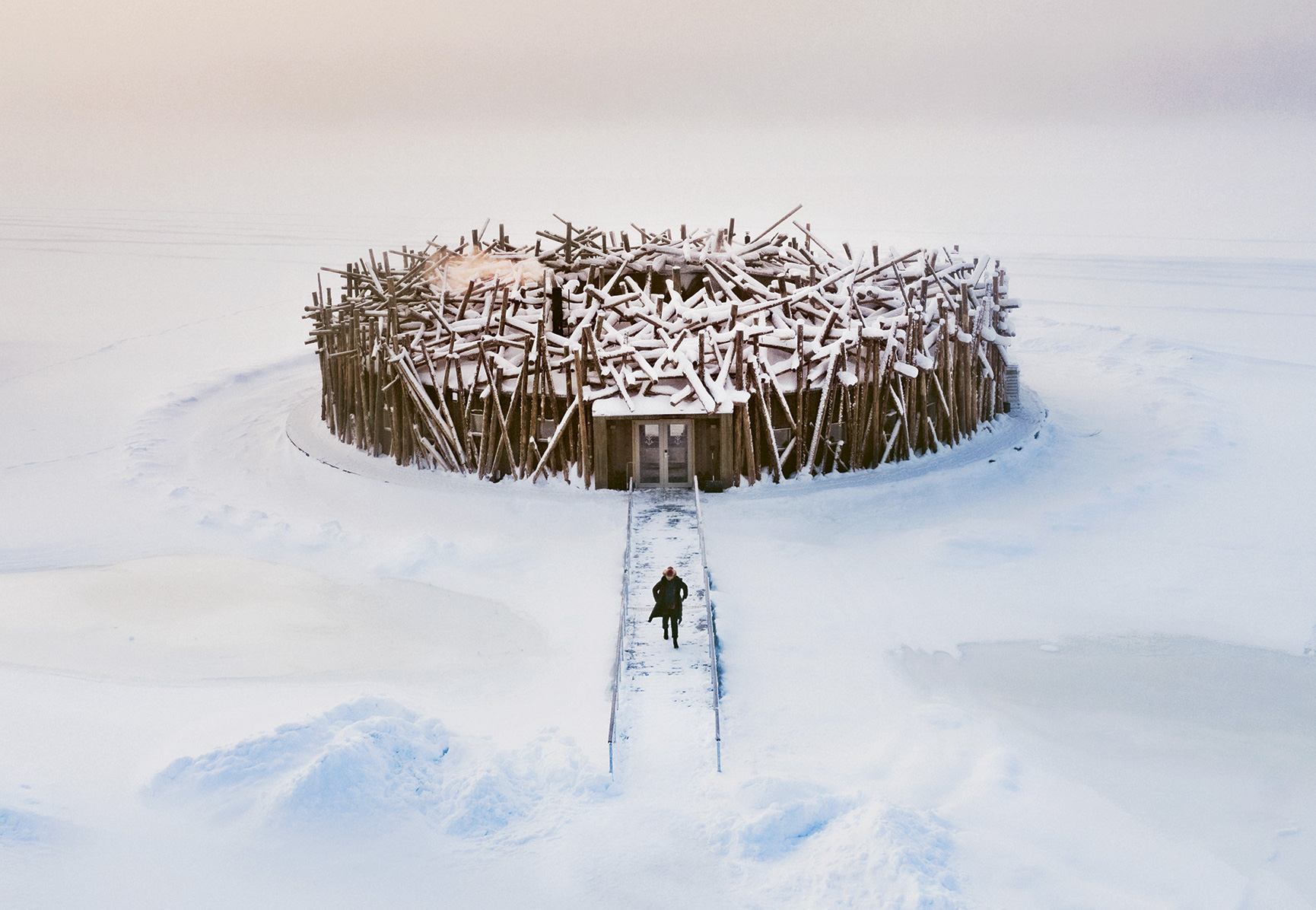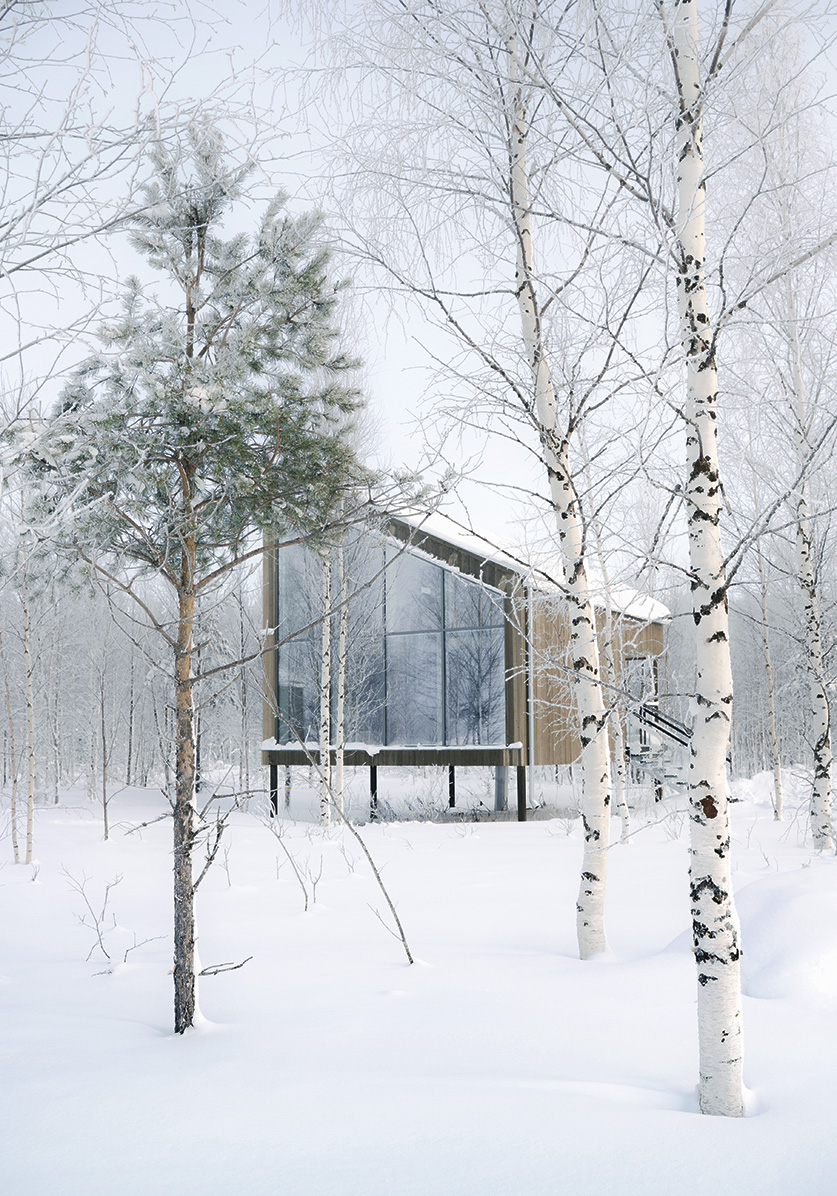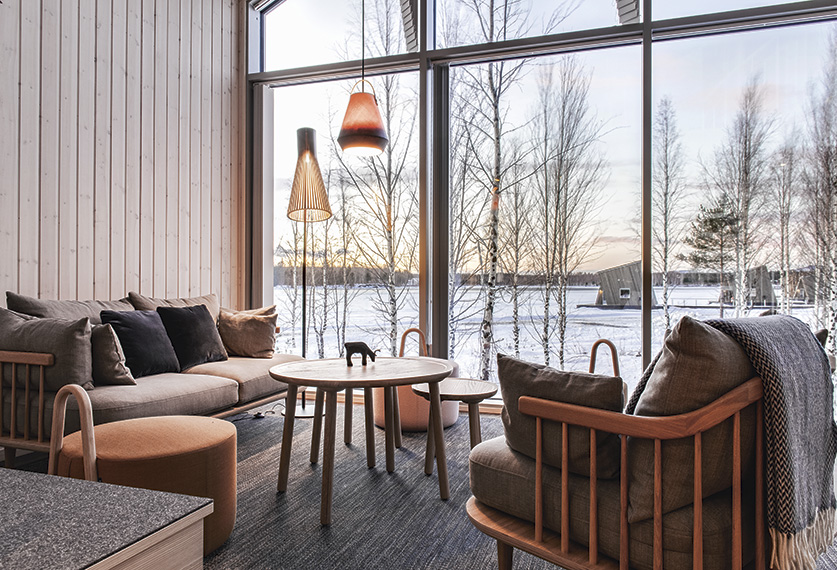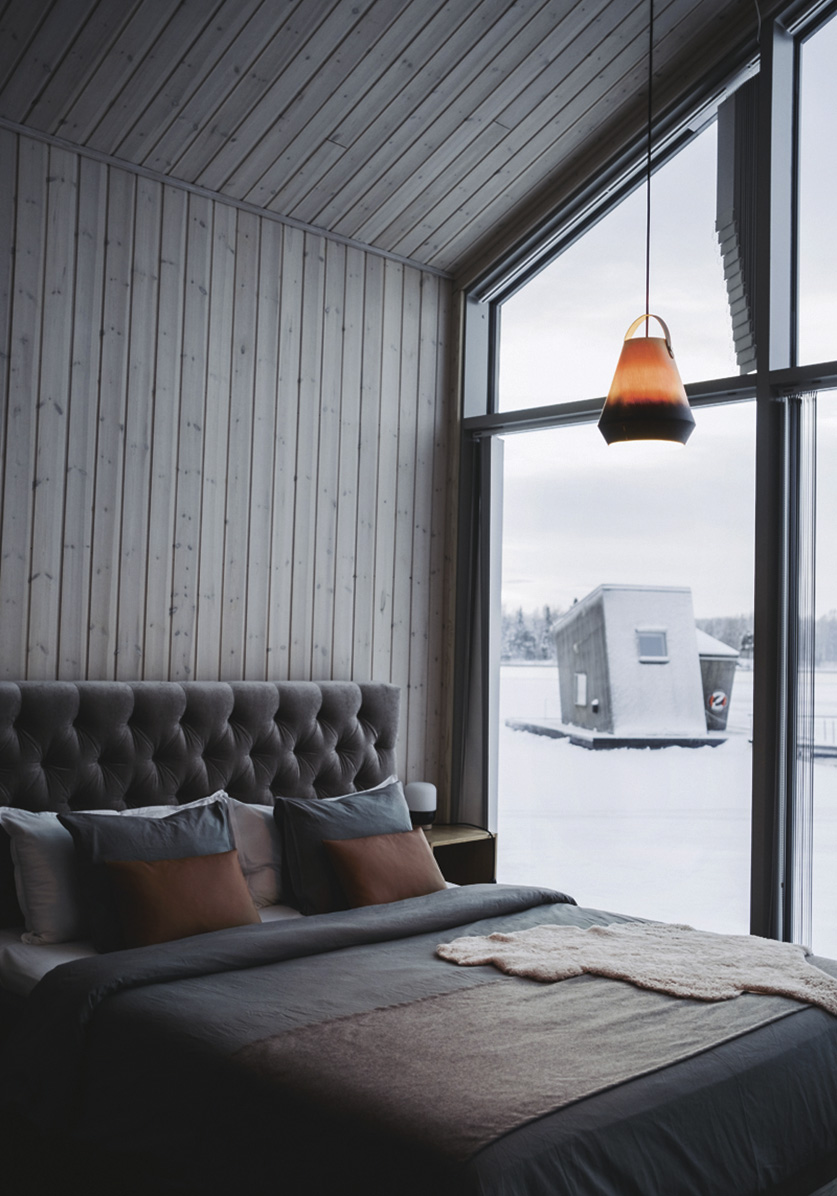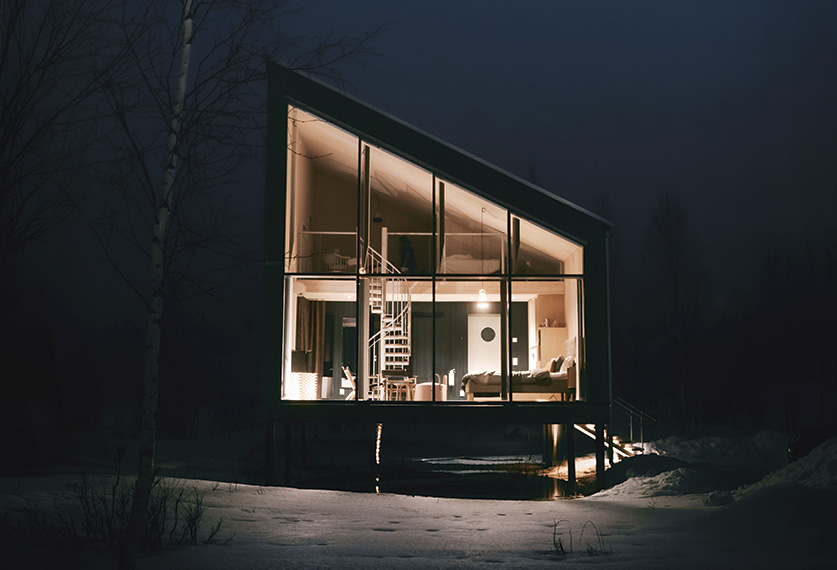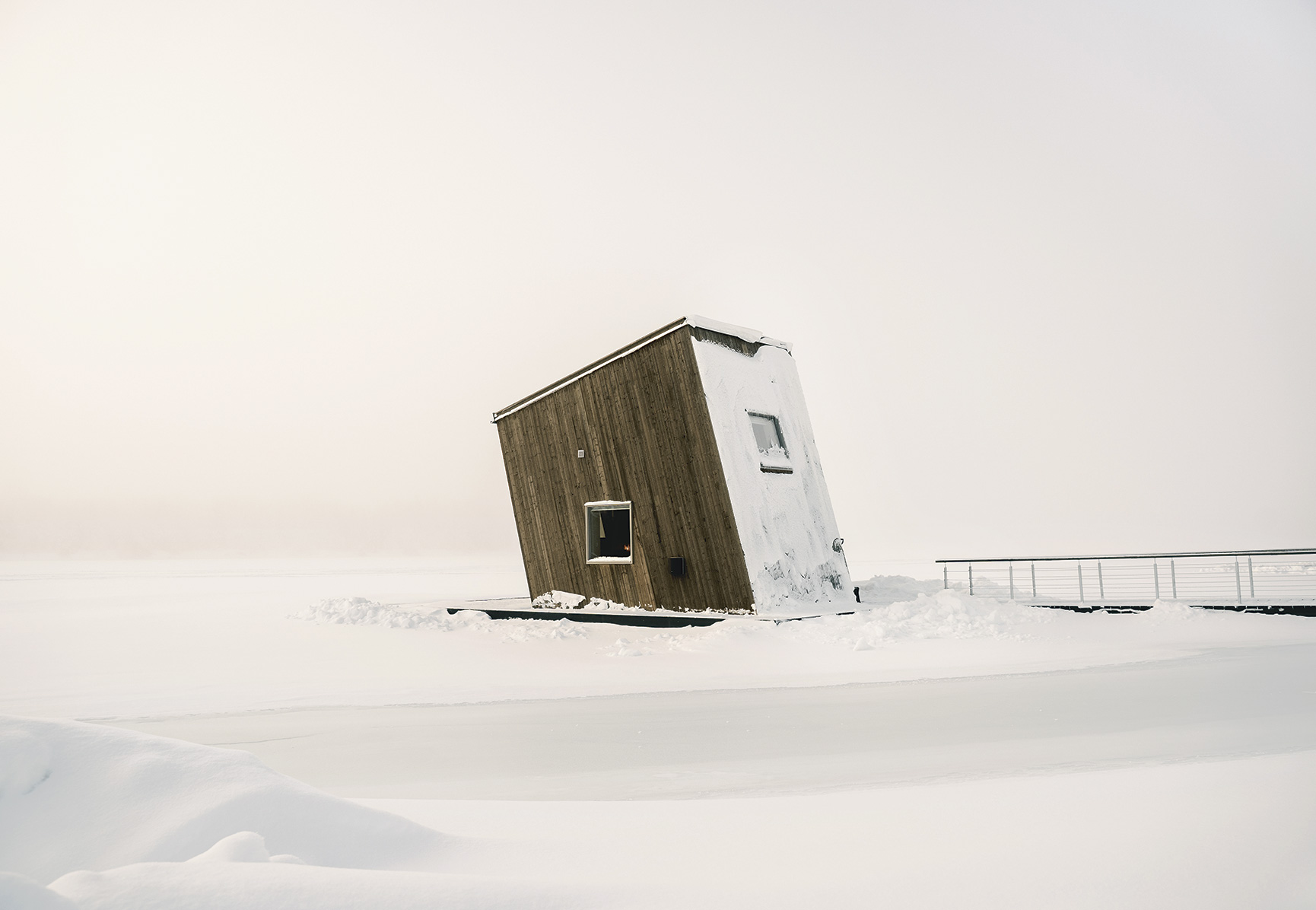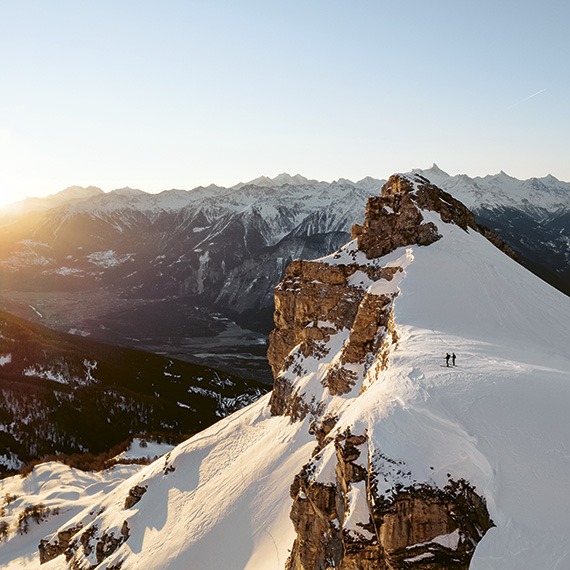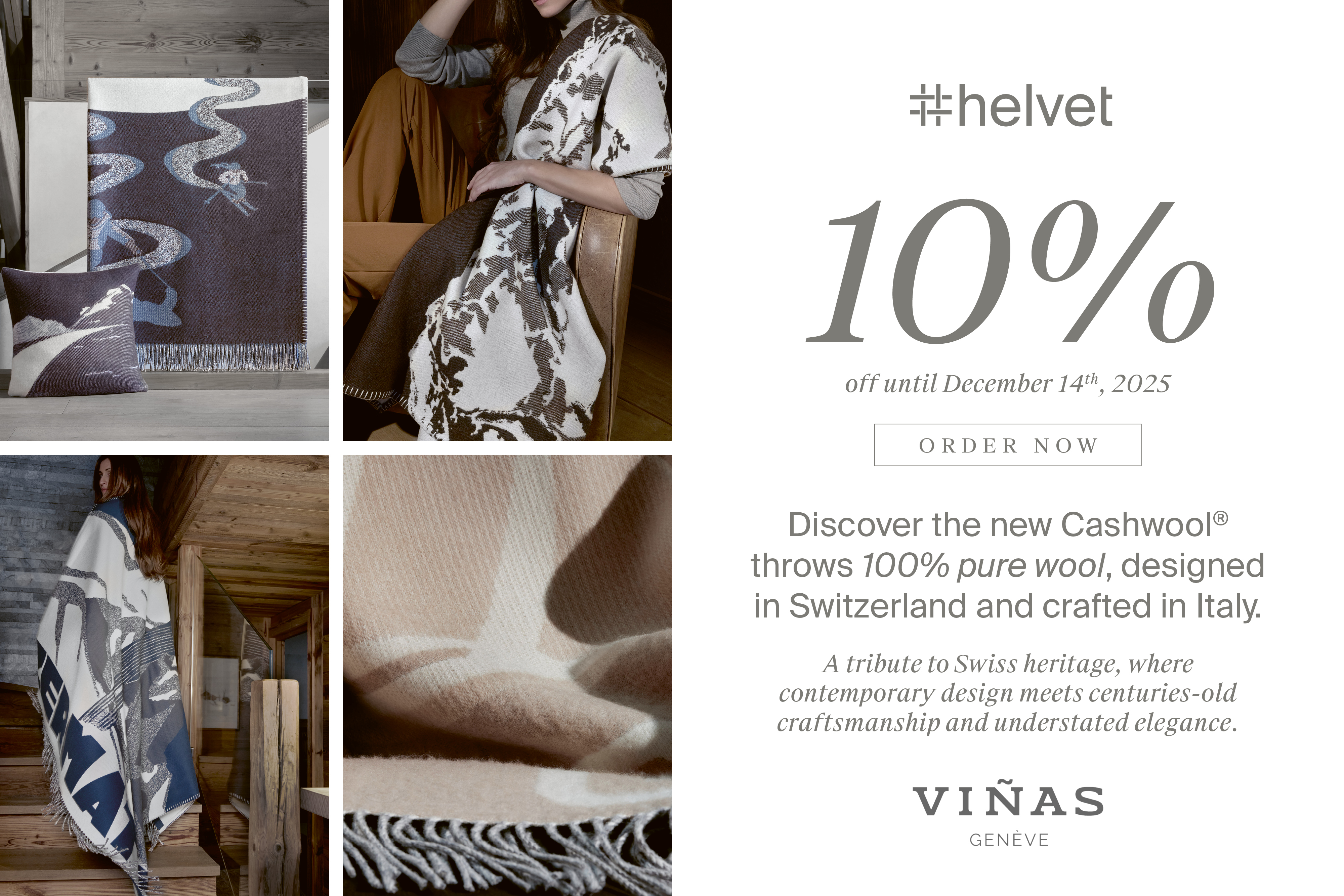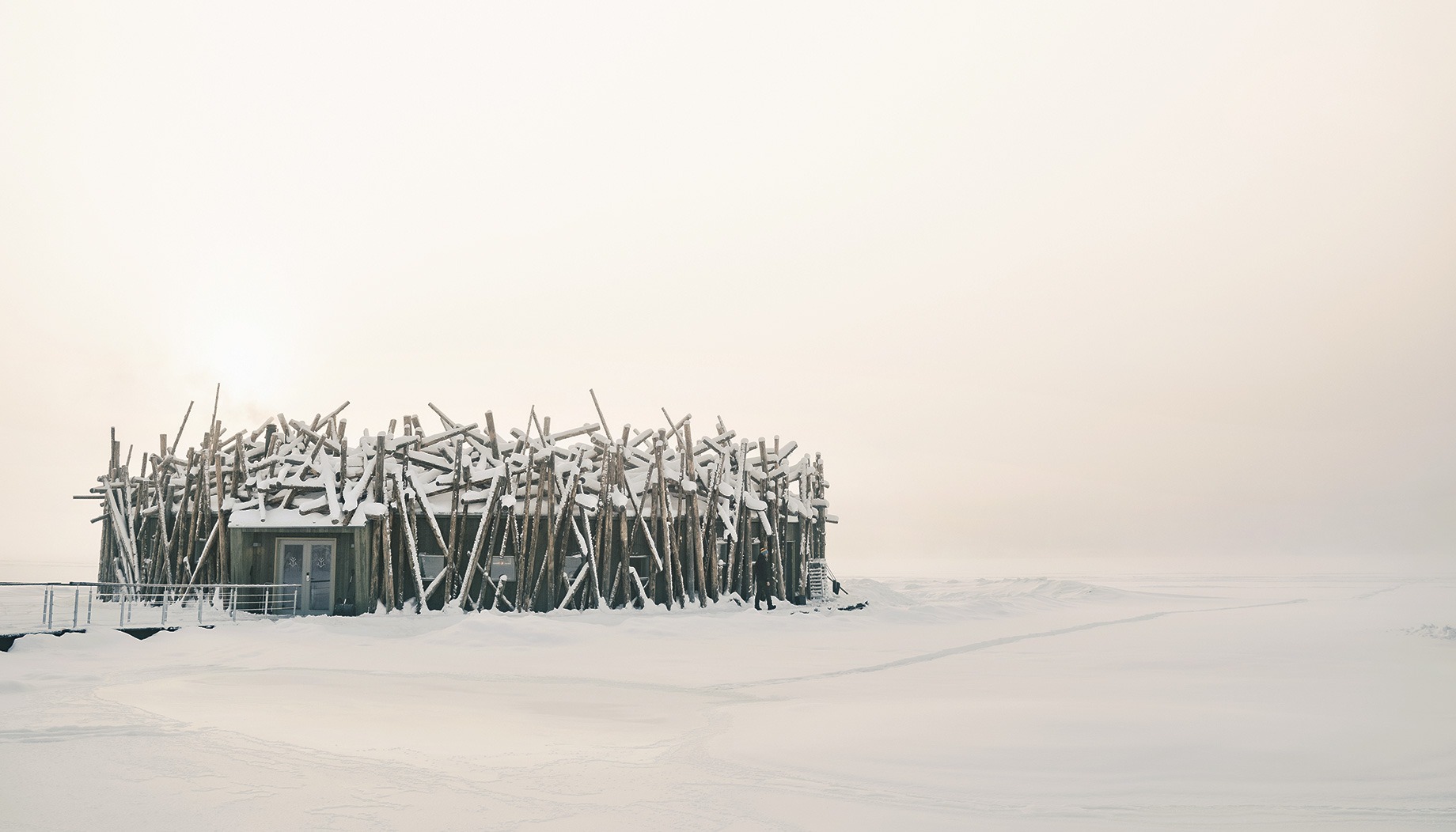
Arctic Bath
Polar immersion
Is it a Siberian fortress? A birthday cake bristling with candles? A wooded islet adrift on the glassy eye of a frozen lake? No — it’s a hotel. Here, architecture and nature conspire to surprise at every turn.
The Arctic Circle lies just 50 kilometers away as the crow flies. The nearest airport, Luleå, is an hour’s drive south, on the far edge of the Gulf of Bothnia. The road north winds through white silence, along the broad Lule River framed by birch curtains and scattered red farmhouses, across snow-blown tarmac where powder lifts in gusts behind each passing car.
A window on the Arctic
With little more than two inhabitants per square kilometer, Swedish Lapland is among Europe’s emptiest landscapes. There are no crowds here, only immersion — body and soul — into a wilderness where blizzards make their own rules. In December, daylight makes a brief appearance between 10:15 a.m. and 1 p.m., leaving long hours to curl up together under star-filled skies and the flickering glow of the Northern Lights.
The cautious admire the spectacle from the vast glass wall of their 62-square-meter riverside suite. The bold venture onto the deck of their floating islet cabin, just 24 square meters in size, before darting back indoors to thaw beside a wood stove.
In sauna veritas
Part land, part water, Arctic Bath straddles both. Six generous log cabins are scattered along the riverbank; six smaller “water rooms” are tethered to shore, evoking the ice-fishing huts of Minnesota — though here with heating and private bathrooms. In summer they seem to float. Come winter, when the river freezes solid, they become one with the ice.
At the center of it all rises a ring of timber — a frozen crown recalling the logjams once formed along northern rivers. In the middle: a black eye of open water, the cold bath. Around it: three saunas, hot tubs, and a treatment room, each radiating warmth and release. Guests stoop to enter, monk-like, only to emerge lighter, fortified for the next storm and snowdrift.
The snow kingdom
Snow is the region’s identity, burden, and greatest ally. The Sámi people are said to have more than 200 words for it: the brittle crust of sabekguottát that gives way underfoot; the wind-hardened tjarvva favored by reindeer; the divine powder of habllek; the untouched slopes known as åppås. By early March, gidádálve — the “spring-winter” — has arrived. Days grow longer, the air softens, skis glide easily across the bright white mantle, dogs strain on their harnesses, and snowmobiles purr through clouds of crystalline spray.
Each day, a rhythm of activity, wellness rituals, and local cuisine reinforces the hotel’s quiet promise. Tension ebbs, spirits lift, and the outer world slips away. Until, reluctantly, there comes the reminder: a solitary road still links this Arctic island to the rest of life — and at some point, you’ll have to take it back.
